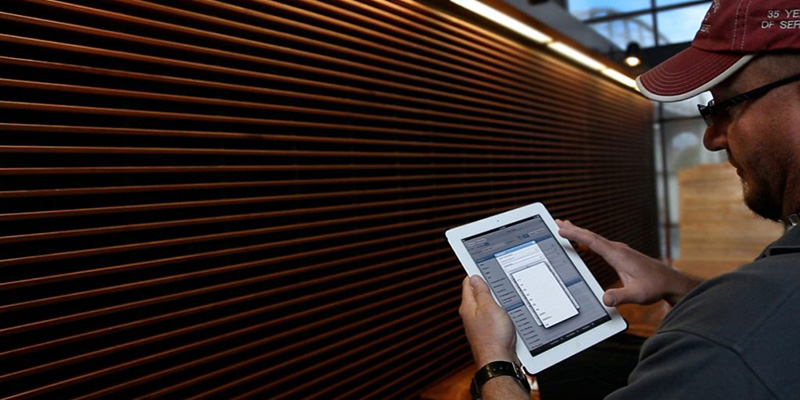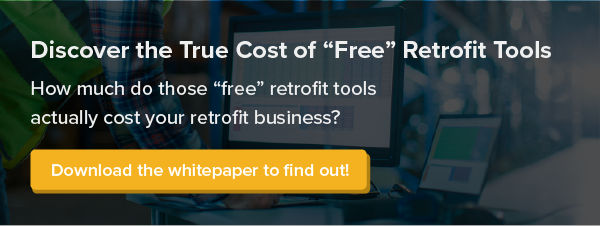
Conducting an audit is the first step in any lighting retrofit proposal. But your success hinges on how much information you capture, and how accurately it is recorded.
When details are missed or measurements are off, it can lead to proposals that don’t meet the needs of your customer. Even if you manage to win the business despite those errors, you could still face expensive mistakes that need to be fixed down the line.
Where are the weak spots in your audit process?
As it turns out, while every auditor approaches the process differently, typically they focus on three big “buckets” of data:
- The types of fixtures present, along with their locations.
- The number of fixtures.
- The average burn hours for each fixture.
This is all important data to gather, and this information will drive many of the calculations that go into the final proposal. But they’re simply not enough to tell the whole story.
The Devil Deal Is in the Details
Clients want to invest in a retrofit project because it will save them money and reduce their energy usage.
And yet experienced retrofitters know there’s more to closing deals and building lasting client relationships than pure bottom-line impact.
For starters, clients value retrofitters who are organized and professional, who can complete their projects on time and within budget, and who know how to do their work with minimal disruption to the client’s ongoing business operations.
In other words, details really matter in the retrofit business. And the best way to manage those details is to go that extra step during the audit. Here are a few examples of how collecting data on the granular details can make a big impact on your project.
Collecting more data ensures you provide the correct solution. |
Having more audit data saves you from making more trips. |
Detailed data lays the groundwork for faster installations. |
| If you’re only focused on the three “big buckets,” you could be missing critical details. Consider collecting data on color temperature, ceiling height, fixture dimensions and other factors. The more details you can pinpoint, the better results you’ll get. | Audits take time and resources to complete. The last thing you want to do is make multiple trips. Yet if you’re not collecting enough data the first time, you may find yourself needing to revisit the site to finish your audit. | Missing audit information can lead to the wrong materials being sent to the site for installation — an expensive mistake that can throw off your timelines. By collecting more data, you can ensure your installation crew has exactly what they need for the job. |
Gathering enough data up front allows you to smoothly manage the project from end to end. It’s like going into battle: You can avoid surprise attacks by first taking the time to learn the lay of the land.
How to Expand Your Data Collection Strategy
With the old pen-and-paper approach to auditing, auditors had to work hard simply to collect basic data on fixtures, quantities and burn hours. Anything they recorded by hand had to then be transcribed and imported into a spreadsheet.
This cumbersome process introduced many opportunities for error.
The pen-paper-spreadsheet method also inhibited flexibility. If there were any data discrepancies, client questions or requests for changes, auditors would have to return to the site to double-check their work or record new information.
It’s no wonder that most auditors chose to stick to the bare minimum of data collection. It simplified things all around.
Today, though, lighting audit software makes it easy to move beyond pen and paper, forgoing the spreadsheet for a 21st-century technology solution.
A modern lighting audit software package (such as SnapCount by StreamLinx) enables auditors to move efficiently from room to room and site to site, using a mobile device to sync critical data to the cloud, where the data can be shared, adjusted and expanded upon with ease. Even better, there’s no need to interpret chicken-scratch handwriting or manipulate awkward, slow-loading spreadsheets.
Perhaps most importantly, lighting audit software helps auditors collect the additional details, or attributes, that can make or break a retrofitting proposal. Helpful attributes can include:
- How a fixture is mounted and the fixture type.
- The style and size of a lens.
- Voltage information.
- Controls information.
- Wattage.
- The necessary height for a pole light.
- Ceiling and fixture height. (Height measurements are especially crucial for warehouse or exterior lighting.)
Is collecting data on these attributes an absolute requirement? No. Will collecting data on these attributes enable you to add color and specificity to your proposals and improve your ability to manage your projects? Definitely.
Choosing the Right Audit Software
As a new generation of digital-native auditors enters the field, lighting retrofit software is becoming more popular. But not all software solutions are the same. They do not all enable the level of detail I’ve written about in this article.
Many software applications stop once the proposal is created. But as an auditor, using a tool that allows for a project to be managed end-to-end can enable a more seamless transition from proposal to delivery. This can minimize errors, enable you to work more efficiently, and potentially help you identify more rebate opportunities for your clients.
One of the many reasons I rely on SnapCount to capture room, fixture or control details, or more complex information such as energy conservation measures, mechanical or HVAC savings, is because it allows for granular data capture. With features like a fixture schedule that can be categorized by technology, it’s much easier to precisely identify and record the fixtures the job will need. This protects you from missing small details that can lead to big problems down the line.
Another feature that has transformed the audit process is SnapCount’s 360-degree camera. This tool lets you to capture a panoramic view of the site so you can see how everything fits together. The photo tool also allows you to annotate images, making it easy to add important notes about the audit right away.
The level of detail I can capture with SnapCount helps me to tell the whole story of a lighting retrofit audit in my proposals — which in turn wins me more business.






Share this post: